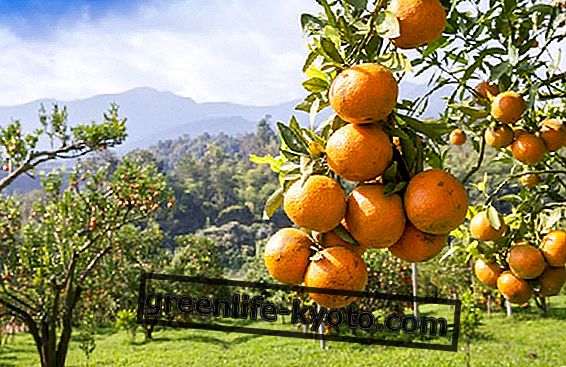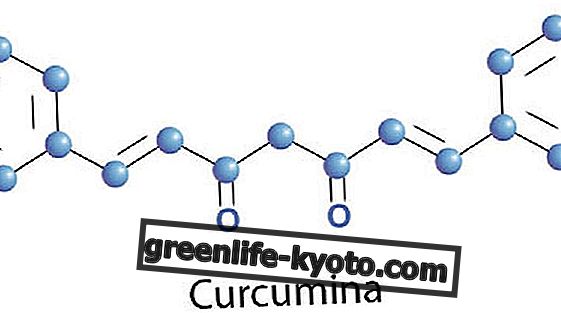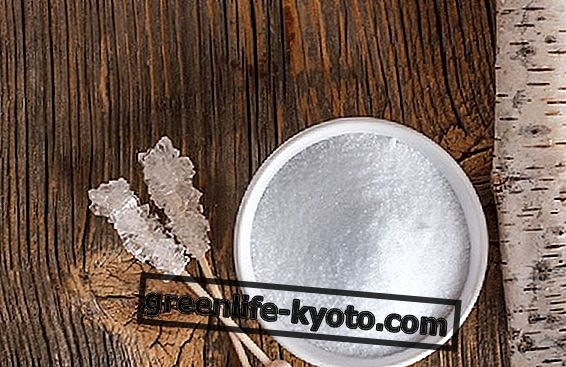
Mandarin origins and seasonality
Mandarin is a tree of the Rutaceae family like other citrus fruits such as lemon, orange and grapefruit.
Its botanical name is Citrus reticulata and is a small evergreen tree that can grow up to 2 meters high.
Its leaves are small and of a beautiful dark green with white flowers formed by 5 petals that bloom in spring.
Their scent is intense and the flowers are used, as well as the skin of the fruit, to extract perfumed essences for the cosmetic industry, for the creation of perfumes and for aromatherapy.
The mandarin fruit ripens from autumn until the end of winter and there are many varieties and hybrids of mandarins which have different taste, shape and size in the fruit and in the structure of the plant.
For example, many varieties of mandarins have the peel almost completely detached from the pulp and this makes them very easy to open, while others like clementines and mandarins are hybrids that look more like oranges even in flavor than the mandarin from which they are crossed.
The same mandarins were born from the natural hybridization already hundreds of years ago and are part of the 3 original citrus fruits:
> cedar,
> pomelo
> and precisely mandarin.
From these citrus fruits, lemons, oranges, mandarin oranges and all other citrus fruits are born .
The origins of mandarin cultivation can be found in East Asia and then its spread has touched the Mediterranean lands where it currently finds its maximum production.
In Italy the finest mandarin cultivations are in the South between the lands of Sicily and Calabria.
In the rest of the world, mandarin is also grown in America and southern Africa.
Mandarin cultivation requirements
Mandarin, like other citrus fruits, needs sun and therefore a position where it is exposed to sunlight for most of the day. Usually the areas to the south are the best and maybe even near a wall or embankment that protects it from the wind and warms it more.
The ideal climate for the mandarin is a warm climate with winters not too rigid for this reason the lands of southern Italy are very indicated for its cultivation.
Wind is another factor that affects the growth of the mandarin so it is good to evaluate a non-windy position. The risk also given by the wind is the desiccation of the leaves and shoots as well as the eventual breaking of the smaller and weaker branches.
As far as the soil is concerned, the mandarin prefers a loose, deep, fertile and well-fertilized soil. The pH of the soil is recommended between 6.5 and 7.5 and also calcareous, clayey or too salty soils should be avoided.
In addition, the soil must be very permeable because it suffers from stagnant water, in fact the waterings must be regular but not abundant, otherwise the risk of radical rotting.
The ideal temperature of growth of the mandarin is between 13 and 30 degrees and when the temperatures drop or rise above 40 degrees the plant suffers a lot with risk of perishing especially if it happens in the first 2 years of planting when the plant is still very young.
Mandarin cultivation
Mandarin is a robust tree thanks to its deep root system that once developed allows it to thrive at its best. It can be grown on the ground or even in a vase as long as it is large.
The mandarin plantation is recommended at the beginning of winter so that it can have time to adapt to the new environment by taking root.
The holes must be deep and at least 4 or 5 meters apart . Natural fertilizer is placed as mature manure and good mulching on the surface.
Usually we can buy saplings directly in the agrarian or specialized nurseries and then plant them in holes prepared on the ground or in pots.
The multiplication of the mandarin is made as a graft on a bitter orange that has roots and a more resistant and less prone to disease base structure.
The first few years the mandarin needs water on a regular basis and with greater frequency in the summer while in winter the irrigations are almost suspended.
The pruning of the mandarin is an operation that is done to make the plant more aesthetically harmonious but also to facilitate harvesting. However, the need for pruning always occurs for dry branches and for suckers.
The production of mandarins begins in more significant quantities from 4 or 5 years of planting but already in the second year we can reap the first fruits.
Collection and use of mandarins
The mandarin fruits are usually picked by hand when the petiole lets them detach from the tree in a natural way. The harvest takes place from autumn and throughout the winter and this also depends on the more or less late or early varieties we have chosen to cultivate.
Mandarins are usually eaten as fresh fruit especially in winter when it is harvested and are also excellent combined with other fruits to create delicious fruit salads, ice creams and other desserts.
They can also be used to prepare delicious jams or, starting from their zest, we can make tangerine candies.
Finally, the richness of essential oils in the peel of mandarin sees them used also in the cosmetic industry and in perfumes as well as in aromatherapy and in other herbal products.
Also read Mandarin essential oil, properties and benefits >>













